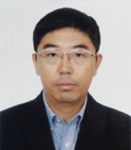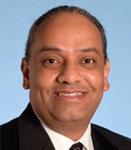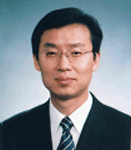
 |
Shenyang Institute of Automation, Chinese Academy of Sciences P. R. China http://english.sia.cas.cn "Control for the Autonomy of Robots: Algorithm, Experiment and application" With the great development of robotics in recent years, many field robots have been expected to carry |
|
out tasks in outdoor surroundings, where the robots may suffer from complex terrains, dynamic obstacles/dangerous, bad weather, and so on. Thus, one of the challenging topics will be: how a field robot can survive the environment while handling the assigned tasks in an optimal/intelligent approach. And the autonomy, which enables robots working on those complicated circumstances with reduced human-intervention, has been becoming one of the main goals of AIS. In order to improve the autonomy of field robots, there are at least four aspects of researches should be focused on: 1) modeling and understanding the behavior environment, i.e., how a robot senses, processes, and presents both its internal dynamics and external surroundings so that the robot controller can make decision according to 'current situation/scenario'; 2) behavior optimization, i.e., how a robot can make a optimal decision corresponding to both the internal and external situations; 3) autonomous learning, i.e., a robot should be able to learn from its experiences, and using the 'knowledge' while making a new decision; and 4) cooperation and coordination of multiple robots, i.e, how to improve the performance by multiple robots rather than a single robot. In this speech, we will provide an overview of the above-mentioned aspects, and introduce some experiments and applications currently being conducted in the State Key Laboratory of Robotics, Shenyang Institute of Automation. |
|
 |
University of New South Wales - Canberra Australia www.seit.adfa.edu.au/staff/sites/abbass "Computational Red Teaming for Air Traffic Management" Evaluating future concepts in complex systems, such as the Air Traffic Management (ATM) system, is a |
|
complex task. The interaction between the large numbers of elements in these systems can hide a space of possible weaknesses and defects. The socio-technical interaction aggravates matters even more. The human-machine integration challenges raise the level of complexity to a level that can’t be managed using simple analytical techniques. Artificial Intelligence (AI), and in particular the sub-field of Computational Intelligence (CI), brings new solutions to these problems. CI is a multi-disciplinary field that fuses knowledge across biology, linguistics, artificial intelligence, engineering, and decision sciences. Computational Red Teaming (CRT) is a framework that builds on CI to develop a test and evaluation environment for evaluating futures concepts for complex systems. The fundamental concept of CRT is role-play the adversarial situations that a concept may face because of the complex interactions in the system. CRT relies on Game Theory, Computational Intelligence, Data Mining, Optimization, and Strategy Formulation to create an intelligence environment in the computers to test and evaluate concepts as well as existing systems. In this talk, I will introduce some of the challenges in Future Air Traffic Systems including, for example, the integration of autonomous air vehicles in the system. I will present some of the future concepts and the difficulties in realizing them. I will then discuss how CRT addresses some of these problems. I will then explain how what we have achieved in the air domain can translate easily into evaluation systems for land robotics, under-water vehicles, and autonomous systems in general. |
|
 |
President of Yujin Robot Co.,Ltd Korea www.yujinrobot.com "Service Robot Platform for Open Robotics Community" How can we jump-start the process to a point where it is actually possible for the service robotics |
| industry to be successful? For the fundamental problems, we need to look outward to work on the building blocks. That may involve collaborations and using/contributing to the open robotics community. To complement this, universities need to train students on common reference platforms so they can walk into jobs and be immediately useful. This is not an idealism, it is an absolute imperative in order to reduce the costs of both the development process and the product. Incidentally, these same ideals also lower the bar for a postgrad student or lab to do research. This speech will discuss this paradigm shift at Yujin as well as their plans for university collaboration to assist in getting us to all start speaking robotics from very similar frames of reference. | |
 |
KAIST Korea http://neurorobot.kaist.ac.kr/ "Understanding Minds through Synthesis: A Neuro-Robotics Research Project" The difficulty in understanding minds is that their problems are inherently multifaceted. We can delve |
| into so many different aspects and issues of minds, including subjectivity and consciousness in phenomenology, behavioral correlates in psychology, computational metaphors in cognitive science, biological implementation in neuroscience, social cognition with theory of minds, pathology and mechanisms of mental disorders in psychiatry. A good model of minds should, therefore, account for all these different aspects and would be better than having a different model for each. In this talk, I introduce the challenges in modeling minds that my research team has been attempting to solve as part of a neuro-robotics research project over the past decade. We have proposed, as the core model in the project, a “generative model” with hierarchy which features two essential processes: a top-down process for predictive action generation with the current intention and a bottom-up process for recognition of the reality with modulating the intention. Our neuro-robotic experiments, implemented with the model, have demonstrated a set of nontrivial phenomena including i) self-organization of functional hierarchy which enables compositional goal-directed actions, ii) spontaneous generation of novel actions and mental imagery, iii) dynamic changes in neuronal activity representing shifts between conscious and unconscious states, iv) dynamic organization of understanding others and cooperative actions, and v) appearance of the diverse symptoms of schizophrenia and autism when “disconnection” is introduced into the model network. Our dynamical systems analysis revealed that these phenomena emerge as the result of nonlinear interactions between the top-down and bottom-up processes and synaptic changes. Since these phenomena can be interrelated in multiple aspects, the proposed model may capture some of the essential characteristics of minds. | |

